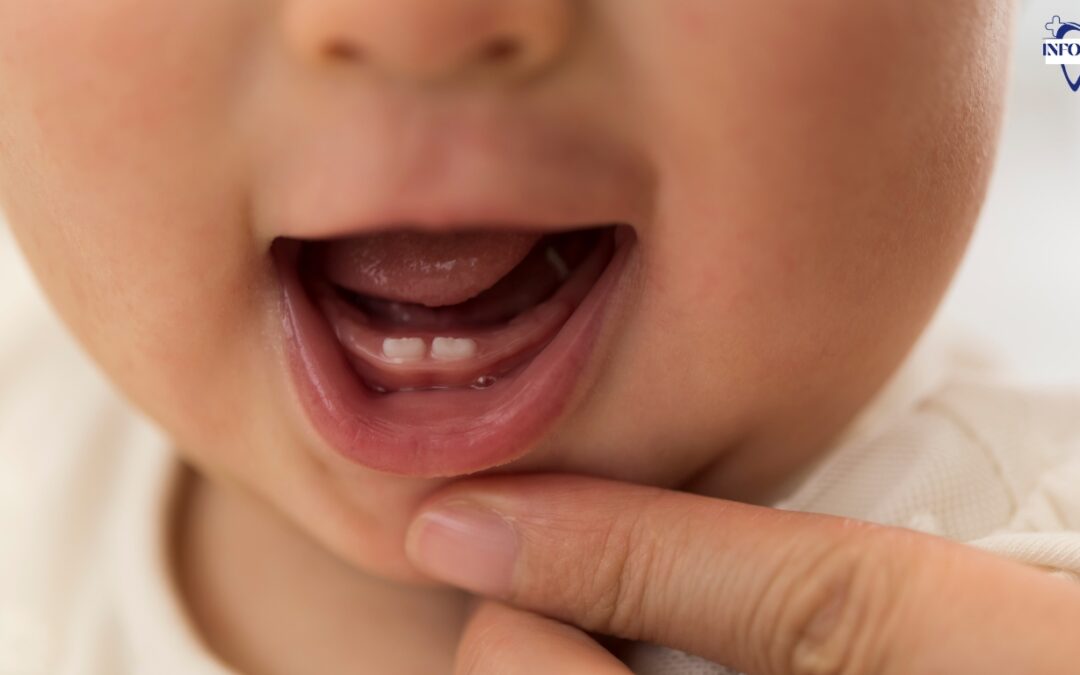Mamelon teeth—those little, rounded bumps on the incisor edges—often draw attention to themselves because of their unusual appearance. These dental formations, frequently seen in children and adolescents, represent an inherent diversity in teeth structure. Although no major health hazards are associated with these teeth, it is important to understand their causes, appearance, and available treatments to preserve good oral health and take care of any cosmetic issues they may cause.
Table of Contents
Let’s examine mamelon teeth in greater detail and how they may affect our smiles.
Teeth Mamelon
These are little ridges or bumps that jut out from the margins of incisors that have just broken through the surface. Usually present on the upper and lower front teeth, these pimples are more common in kids and teenagers. The French word for “nipple,” which describes the rounded shape of these structures, is where the term “mamelon” comes from. Mamelon teeth are generally benign and are regarded as a typical variation in tooth structure.
They are the outcome of aberrant development when the enamel organ forms. Although these teeth don’t provide many health risks, some people may decide to have cosmetic dentistry procedures done to improve their appearance. Maintaining good oral health and taking care of related issues requires understanding mamelon teeth, their causes, and their consequences.
Mamelon Teeth Causes
Mamelon teeth can result from various circumstances, including heredity and developmental factors. They are distinguished by little protrusions on the edges of newly erupted incisors.
Genetics:
The development of mamelon teeth is significantly influenced by genetic predisposition. Similar oral traits, such as prominent mamelons, are more likely to be inherited by their offspring if one or both parents have them. These teeth can arise due to genetic mutations or changes that affect how tooth structure develops. According to studies, the development of these distinctive bumps on the incisors may be influenced by particular genes related to dental morphology.
Developmental Factors:
Complex mechanisms within the enamel organ during tooth development can sometimes produce mamelon teeth. When a tooth erupts, these developmental anomalies may appear as tiny ridges or bumps on the surface. The prominence of these teeth can be attributed to various factors, including mineralization or interruptions in enamel production. Furthermore, differences in how dental tissues grow and develop in the early years of life affect how these structures seem.
To understand the etiology of these teeth, one must grasp the interaction between genetics and developmental circumstances. Developmental mechanisms inside the enamel organ further shape their traits, even as genetic predisposition lays the groundwork for their production. Dental practitioners can offer useful advice and treatment choices to patients with mamelon teeth by addressing these underlying reasons, guaranteeing the best oral health and appearance.
Signs And Symptoms
Mamelon teeth usually present with signs and symptoms related to their appearance and possible impact on oral health. Here are some important symptoms and indicators:
Visible Bumps or Ridges:
Tiny, rounded bumps or ridges on the margins of recently erupted incisors are the most obvious indication of these teeth. Close inspection of the impacted teeth often reveals these protrusions.
Smooth Surface Texture:
These teeth can have a smoother surface texture than the surrounding enamel in addition to their unique form. This smoothness may be a factor in their predominance and striking appearance.
Uneven Tooth Edges:
Incisors impacted by these teeth may have uneven or irregular-looking tooth edges. This anomaly could disconcert certain people and affect the smile’s overall symmetry.

Possibility of Tooth Sensitivity:
Mamelon teeth may occasionally be linked to heightened tooth sensitivity, especially if the protrusions cause the enamel to weaken or reveal the dentin underneath. Those with sensitive teeth may feel pain when eating or drinking hot or cold items.
Effect on Self-Esteem: Besides causing pain, having these teeth can impact a person’s confidence and sense of self. Feelings of self-consciousness and a negative impact on social relationships might result from dental concerns.
Mamelon Teeth In Adults
Although more frequently seen in children and teenagers, adult mamelon teeth are possible. These teeth can sometimes last throughout adulthood. However, they usually become more noticeable soon after the incisors develop. The following are important things to think about when it comes to adult mamelon teeth:
Mamelon Structure Persistence:
In certain people, the tiny protrusions or grooves that define teeth that are mamelon may continue to show on the margins of the incisors long after puberty. These structures might persist throughout adulthood because they don’t deteriorate as quickly as in younger people.
Possible Cosmetic Concerns:
Having teeth thar are mamelon into adulthood can cause cosmetic issues for some people. Even though these structures are usually benign in functionality, their existence could detract from the smile’s overall appearance. Adults with noticeable mamelon teeth could experience self-consciousness about how they look and seek cosmetic dentistry procedures to help with these issues.
Dental Treatment Options:
Adults with mamelon teeth can choose from several treatments for related dental problems or cosmetic concerns. These alternatives could include veneers to cover up the protrusions, orthodontic therapy to correct the teeth and enhance overall dental aesthetics, or dental filing to smooth out the edges of the teeth.
Regular dental care is essential for oral health, and those with these teeth should prioritize receiving it at any age. Regular dental examinations can assist in keeping an eye on the state of the teeth and addressing any possible issues that may develop because of mamelon teeth, such as tooth decay or sensitivity.
Even though adult mamelon teeth may require different considerations than children’s, with the right dental care and treatment, people can successfully handle any related difficulties and attain a confident smile.
Mamelons On Baby Teeth
Baby teeth are the first set of teeth children grow and eventually lose as their permanent teeth erupt. They can also have melon teeth. What you should know about melons on baby teeth is as follows:
Normal Development:
Baby incisors frequently erupt mandibular teeth, especially in the early stages of erupting. These little, rounded ridges or bumps are present on the edges of the infant incisors. They are thought to be a typical early-life variation in teeth structure.
Mamelon teeth on infant incisors may appear more prominent than those on permanent teeth because baby teeth often have weaker enamel. These teeth may stand out more due to their prominence, particularly when children’s mouths grow, and they start to examine their developing dentition.
Temporary Nature:
Although these teeth on newborn incisors may appear prominent initially, typical chewing and biting actions often cause them to wear away over time. The incisor edges eventually flatten out as youngsters utilize them for eating and other activities, which makes the mamelon structures less visible.
Regular Dental Checkups:
Even though it’s common, parents should make time for their kids to get regular dental checkups to track their baby teeth’s development and ensure that any mamelon teeth are present. In addition to evaluating dental health, a pediatric dentist can offer advice on good oral hygiene habits and pediatric dentistry.

Cosmetic Considerations:
Parents may voice worries regarding how their child’s baby incisors—with teeth that are mamelon—appear. Although there are usually no health hazards associated with these structures, parents who believe that any aesthetic problems need to be addressed can speak with a pediatric dentist about cosmetic treatment alternatives.
Mamelons Teeth Treatment
Mamelon teeth treatment usually varies depending on the patient’s preferences and the severity of the issue. These are a few typical therapy choices:
Remark:
These teeth are frequently regarded as a typical variation in tooth structure and may not need any care. Dentists advise keeping an eye on the situation, particularly if the mamelon formations don’t pose any functional problems or cosmetic issues.
Dental filling:
To lessen the prominence of the mamelon structures, the incisor edges are smoothed. This is a simple, painless operation that usually takes only one dental appointment to perform. Those with mild to moderate mamelon teeth may benefit from dental filing, a conservative treatment method.
Veneers:
To hide the mamelon structures and give the teeth a more uniform appearance, porcelain or composite veneers can be bonded to the front surface of the teeth. Veneers offer a durable and aesthetically beautiful alternative to natural teeth since they are manufactured to match their exact form and color.
Orthodontic Treatment:
It could be suggested that teeth that are mamelon be treated if they are linked to further dental conditions, such as misalignment or spacing concerns. Braces or clear aligners help straighten teeth and enhance overall dental appearance. While orthodontic therapy may need more time than alternative approaches, it can offer complete tooth problem correction.
Composite bonding:
To improve the teeth’ appearance, a tooth-colored composite resin material is applied to their surfaces and shaped. This process can successfully conceal the appearance of mamelon structures and is less intrusive than veneers.
The best action for mamelon teeth will rely on several variables, such as the patient’s preferences, oral health, and cosmetic objectives. It is imperative to seek advice from a licensed orthodontist or dentist to ascertain the best course for attaining the intended outcomes.
Mamelons Teeth Before And After
Judging by tiny protrusions on the incisor margins, Mamelon teeth may show clear alterations before and after therapy. Here’s what to anticipate:
Before Treatment:
Prominent Bumps:
Mamelon teeth are distinguished by tiny, rounded bumps or ridges on the incisor margins before treatment. These lumps might seem more noticeable, particularly in younger people with weaker enamel.
Uneven Tooth Edges:
The incisors impacted by mamelon teeth may have uneven or irregular edges. Upon closer inspection of the teeth, this imperfection might be more apparent.
Cosmetic Concerns:
Many people with mamelon teeth could be self-conscious about how their smile looks. The noticeable lumps and uneven edges may affect their self-esteem and confidence, which may lead them to look for treatment methods to deal with these issues.
Following Treatment:
Smooth, Uniform Appearance:
After treatment, these teeth usually appear much better. The incisor edges can be smoothed using dental filling, veneers, or other cosmetic operations to provide a more consistent and aesthetically pleasing smile.

Mamelon structures that are hidden can be successfully hidden with treatments like veneers or composite bonding, making them less obvious or invisible.
Enhanced Confidence:
Patients who have treatment for mamelon teeth frequently report feeling more confident and better about themselves. Their level of satisfaction with their overall dental aesthetics may increase as a result of their better smile.
When mamelon teeth are treated, the grin may be dramatically changed from having noticeable lumps and uneven edges to having a smooth, even, self-assured smile. Selecting the best course of action to attain the intended outcomes might be aided by speaking with a licensed orthodontist or dentist.
Conclusion
To summarize, mamelon teeth are a frequent dental variant distinguished by tiny, rounded bumps on the incisor margins. Cosmetic dentistry procedures are an option for those who want to improve their appearance, even if they usually don’t provide any health hazards. Maintaining the best possible dental health and self-confidence regarding one’s smile requires understanding the causes, diagnosis, and available treatments for mamelon teeth.
FAQs
Q: What should I do if my toddler has mamelon teeth?
A: It’s critical to arrange a dental checkup if you observe mamelon teeth in your child to guarantee accurate diagnosis and suitable treatment recommendations. Your child’s dentist can evaluate the circumstances and offer advice based on their requirements.
Q: Can you straighten mamelon teeth without going to the dentist?
A: Certain minor cases of these teeth may gradually deteriorate due to regular biting and chewing. Dental intervention could be required in more severe situations or if cosmetic problems surface to get the intended effects.
Q: Are mamelon teeth typically seen in adults?
A: These teeth can infrequently last into maturity, although they are more frequently seen in children and adolescents. But when the teeth naturally deteriorate with use, mamelons usually lose some of their prominence.
Q: Do mamelon teeth indicate inadequate dental care?
A: No, these teeth are not always a sign of poor oral care; rather, they are a natural variation in tooth architecture. However, maintaining appropriate oral hygiene habits—consistent brushing, flossing, and dental examinations—is crucial for general dental wellness.
Q:How can I locate a dentist with expertise in caring for mamelon teeth?
A: Asking friends, family, or reliable medical experts for references is a good idea when looking for a dentist with experience treating mamelon teeth. You may also look at local dentist offices and find out about their experience with cosmetic dentistry operations.

